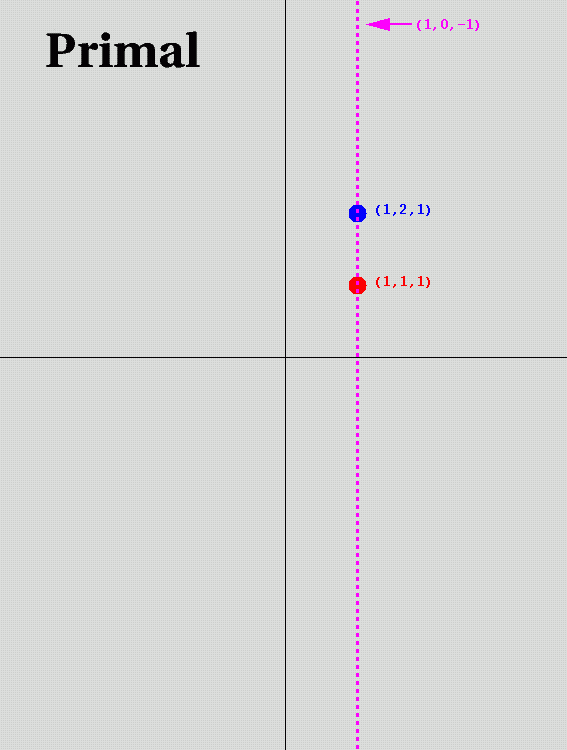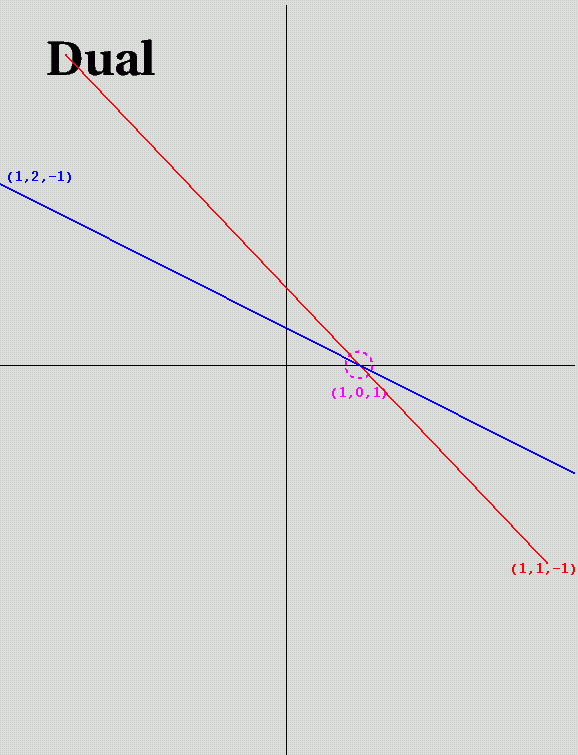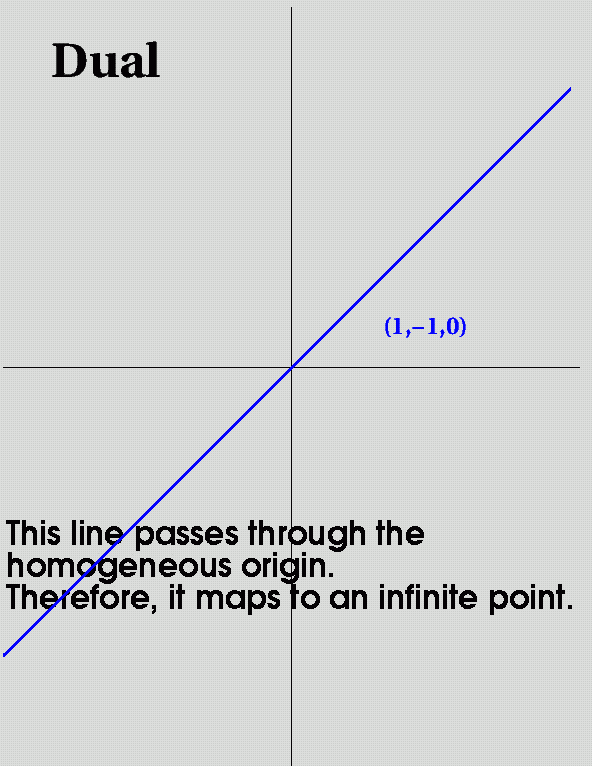- Point-Line Incidence: P . L = 0
- Ex: Point (2,2) and line (1,0,-2) ... P . L = 0!
- Note how easily vertical lines are handled.
- Line thru 2 Points: L = P1 x P2
- Ex: Point (2,2) and Point (2,1) ... yield line (1,0,-2)
- Again, vertical lines aren't a problem.
- Point of Intersection of 2 Lines: P= L1 x L2
- Ex: Line (1,0,-1) and line (1,0,-2) ... yield point (0,1,0)
- This makes sense...the point at infinity in the direction (0,1)
- Now we have handled infinite points!
-





